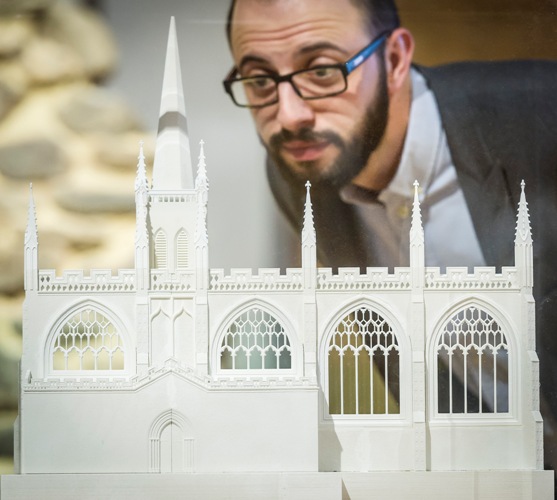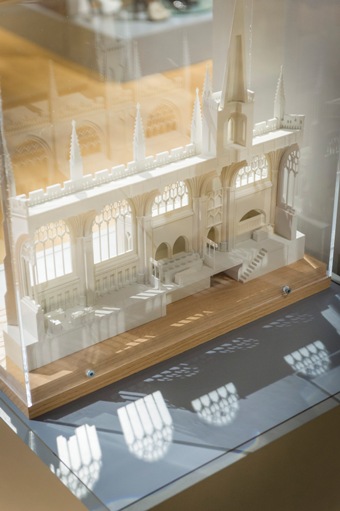A detailed 3D model of the lost church where Richard III’s body was displayed after the Battle of Bosworth has gone on display at De Montfort University Leicester (DMU).

Until now, all visitors to the De Montfort University Heritage Centre have been able to see of the Church of Annunciation were the remaining two arches, preserved in the centre, which once formed part of the crypt area of the building.
But, using cutting-edge techniques, a team from DMU have digitally recreated the church, which was destroyed in the 16th century during the Reformation.
This recreation has now been printed as a detailed 3D model which shows, for the first time, how the church may have looked, both inside and out.
Although no images of the original church exist, DMU’s Digital Building Heritage Group, led by Dr Douglas Cawthorne and aided by Masters students at DMU, have used a mixture of documentary evidence, maps and drawings to imagine how the church would have looked. They also went on field trips to examine examples of similar buildings of the same age in the area.
The Church of Annunciation once stood in the Newarke precinct of the medieval city of Leicester. It was inside this church that Richard III’s body was laid on display by Henry Tudor for two days after the Battle of Bosworth.
The model, displayed in a glass case at the DMU Heritage Centre, is a cross-section, allowing visitors to examine both the exterior and interior of the church and seeing for themselves how the arches also on display inside the centre, might have fit in context within the building.
Katharine Short, DMU Archivist, said the model was a wonderful enhancement to the interpretation of the church ruins.

She said: “We are really pleased with the model because it clearly and visually explains to visitors where they are, what the arches are and how it all fit together hundreds of years ago, exactly where they are standing now.
“This interpretation – informed by academic rigour – means we can finally see what the Church of Annunciation might have looked like inside and out and we have an idea of its beautiful decoration.
“It is also a great testament to collaborative working, with students and academics working together from multiple DMU departments.”
Katharine said Dr Cawthorne’s heritage group was also creating a fly-through video which would be played inside the heritage centre and give people a virtual tour of the church and its surroundings.
Posted on Thursday 27 August 2015